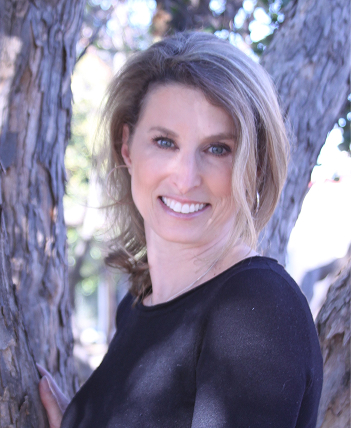 All surgery has risks. Platitude that it is, it is real. If you do enough of any surgery there can be a complication- every once in a while lightening will strike.
All surgery has risks. Platitude that it is, it is real. If you do enough of any surgery there can be a complication- every once in a while lightening will strike.
My patient is scheduled for a blepharoplasty. This is eyelid surgery. She asked if I had ever had any of the following issues (from her internet research, and she assured me she was just being thorough, not challenging my experience. :))
“Possible risks of eyelid surgery include: infection, bleeding, dry irritated eyes, difficulty closing your eyes, noticeable scarring, injury to eye muscles, skin discoloration, need for follow up surgery, temporary blurred vision, rare loss of eyesight, and risks of surgery in general- reaction to anesthesia and blood clots.”
Phew! When you read that list you would wonder why anyone does eyelid surgery at all! But the thing about risks is that most of the time NONE of these happen, or if they do, the issue (like the dry eyes) is temporary.
So let’s break it down:
- Bleeding. Super rare risk. There are no giant blood vessels near the eye. If it is oozing a little, just put a little gentle pressure on it and it will stop.
- Infection. Super rare. The face is very vascular, the incision is small, and the risk is small.
- Dry irritated eyes. Not as rare, but usually temporary. Anytime you do eyelid surgery, when the swelling occurs, it can cause the eyelids to not close tightly. When that happens air gets in, and it can dry out the eye. The higher risk is with lower eyelid surgery. SO WHAT DO WE DO? I tighten the lower eyelid when I do surgery to help combat this. I do a pinch blepharoplasty on most patients, which doesn’t open up the eyelid as much, which is more protective. I put all my patients on opthalmic ointment after surgery to “seal” in the moisture when they sleep. You can use eyedrops during the day (or you may find your eyes tear more or you blink more, which is hydrating the area).
- Noticeable scarring. Yes, you get a scar. How noticeable is it? For the upper lid it goes in the eyelid crease, and tends to look like the natural crease that is already there. For the lower lid it goes just under the lashline. I have not seen a keloid of the eyelid scar. It tends to be hairline and flat. The only visibility I’ve seen has to do with pigment issues, which thankfully are rare.
- Blurred vision. Sometimes I do see this for the first few days after surgery. It is likely from the ointment making things blurry or swelling of the tissue around the eye, which can make it harder to focus, particularly when reading or doing computer work. I do NOT see the eyeball muscles when I do eyelid surgery. I have never had someone with a permanent issue.
- Blindness. We always talk about this as a possible complication, we are tested on it at our board exams. I HAVE NEVER SEEN IT during my entire career.
- Surgery risks: reaction to anesthesia, blood clots, etc. Yes these are risks, but low. This is a shorter surgery with low blood loss. I use leg massagers and do the Caprini risk score for all patients to prevent blood clots.
What did she not mention?
Change of how you look. I think this is important, and in my hands people “look like themselves” when we are done, just more refreshed. Generally changing how the eye area looks has to do with eyebrow surgery (brow lifts), not eyelid surgery.
Sensation change: Anytime you cut the skin, you affect the small nerves. Yes, you will have some numbness which is minimally noticable and returns over time.
Swelling. The area will not look as “crisp” immediately after surgery as it will end up looking. How much you swell and bruise varies from person to person, and varies with your activity. You should sleep with your head elevated after surgery, limit anything which raises your heart rate or blood pressure, and avoid straining.
Ectropion, which is fancy name for saying drooping of the lower lid. It only applies to the lower lid, and you are more at risk for it if you have a flat cheek and have poor eyelid tone. I combat this risk by doing a less invasive eyelid surgery (the pinch blepharoplasty) and tightening the lower eyelid.
All surgeries take time to settle out. You should see your final result 3-6 months out, though you will look presentable 1-2 weeks out after eyelid surgery.
In Summary?
Overall eyelid surgery is very safe. There are real functional improvements, as when your eyelids droop they can cause visual field impairment and eye strain and fatigue. There is no way to get rid of the extra skin (no laser, exercise, or chemical peel) to fix it. Eventually when bad enough insurance will pay for it. If you find that car/ tree branch/ cabinet “came out of nowhere” you likely have an issue with your visual field. You are like a horse with blinders. Eyelid surgery can help.
There is a cosmetic benefit. Your eyes will look less tired, brighter, and more open.
Your forehead wrinkles will lessen, as many people are lifting their forehead muscle to “get their eyelids out of the way,” though you may not realize you are doing this.
It is a great surgery.
The information provided on this website is for general informational purposes only and does not constitute medical advice, diagnosis, or treatment. Always seek the advice of a qualified healthcare provider for any questions regarding your health or medical condition.
